We decided to test our off-grid capabilities recently and to spend a full week off-grid in Oxfordshire. We were a bit dubious about how well the battery would perform as it’s a basic lead-acid battery dating back to 2015. It certainly doesn’t owe us anything. The battery is a generic 100ah offering which means really you can only use 50 – 60 ah. Any more than that and the life of the battery is severely limited.
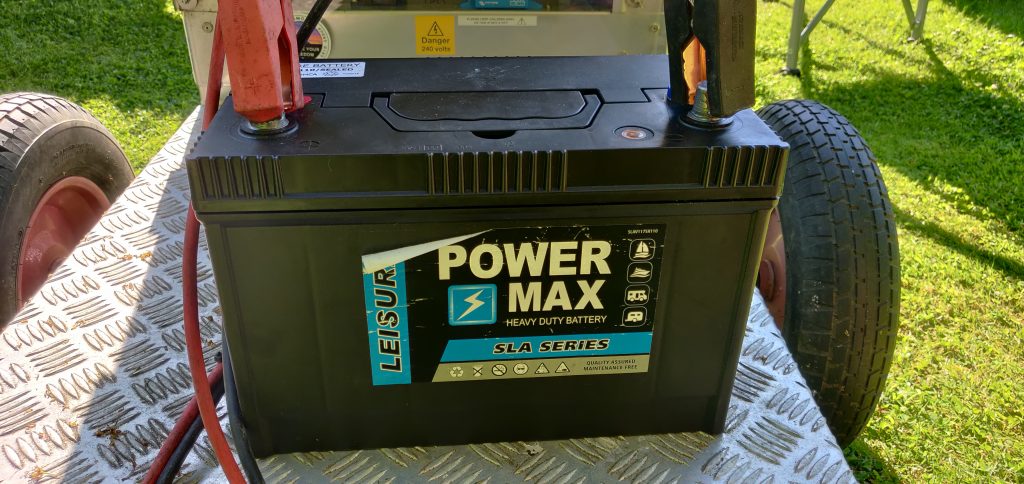
The solar panel is a 40W version, factory fitted by Swift.
The charge controller is a Sargent 1755-R.
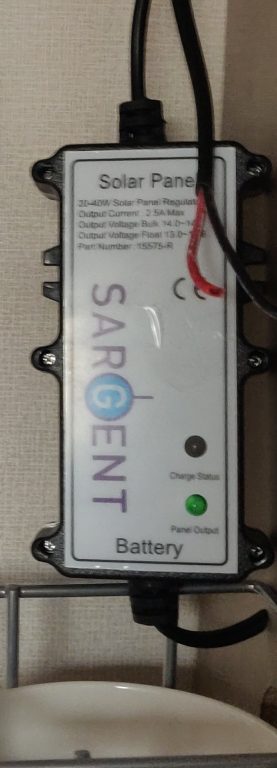
After the first day, the battery voltage had dropped a couple of dots (as measured on the Swift panel) and we noted an issue with the Sargent controller. This very basic controller has two LEDs. The lower one flashes Green to indicate that there is output from the Solar panel. The upper indicator is the “Charging status” and this should illuminate Red for bulk charging and green for float charging. In this instance, nothing. We figured out it was time to replace the battery and the solar controller with a modern MPPT controller and Lithium battery.
I don’t take a huge amount of credit for the upgrades because there is a lot of information on the Web about how to replace the leisure battery with a Lithium phosphate one. On one forum in particular there are some very detailed threads about what is involved – the caravan forum “Caravan Talk”. I used some of the postings on that site to figure out what to do.
First thing was to order a new battery. I went with a Low Profile battery from KS Energy. It’s 120ah Lithium-iron Phosphate battery and apparently has a very good BMS (Battery Management system) built in. It also is a “Smart” battery which means it’s got a Bluetooth interface, Apple / Android App and a whole host of information regarding the state of the battery.
It also has built-in temperature control as Lithium batteries don’t like to be charged below 0 degrees C.
What this means is that you don’t also need to buy say the Renogy 500 monitor nor the Victron sense temperature control module (which terminates charging at low temperatures). It’s all part of the battery.
The KS Energy 120ah LP (Low Profile) battery arrived very quickly and the also the chosen solar controller – a Victron energy MPPT 75 / 15.
Fitting it all was very easy. The Low Profile battery is an easy swap-in, as it’s quite a bit smaller height-wise than the old lead acid offering.
The now defunct Sargent controller connects into the Caravan wiring loom and to the solar panel via two plastic connectors above the microwave.
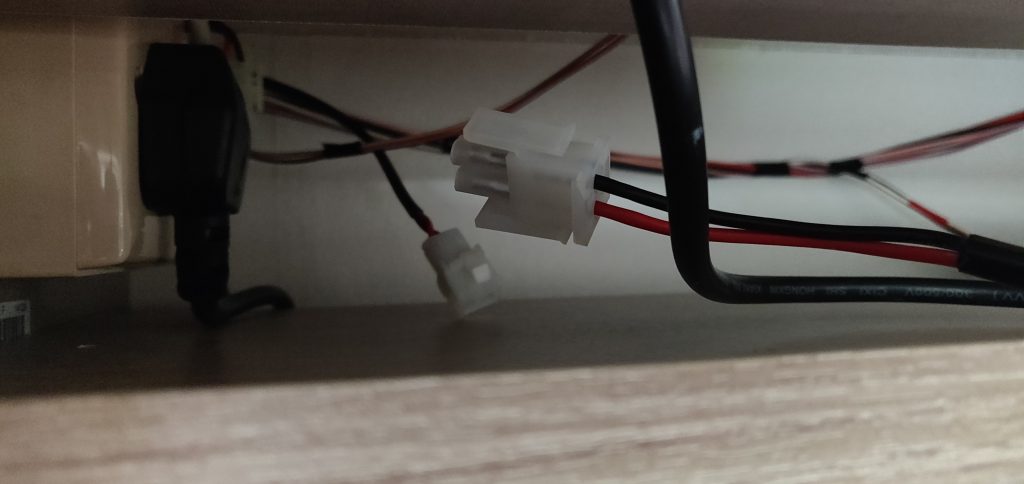
Since I wasn’t trying to salvage the Sargent module I just cut the wires and used the cut wires to connect to the new controller. A bit fiddly in the confined space of the cupboard but very straight forward.
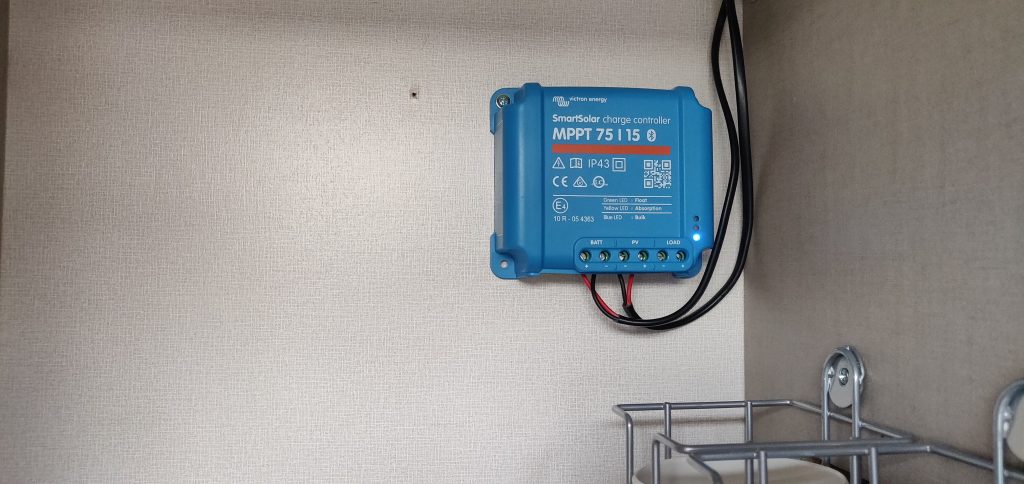
There’s a preferred connection sequence in the controller manual – I think it’s battery before panel.
Once it was all connected, the appropriate LEDs lit up and I was able to pair my smartphone with both the battery and the controller. Once paired, here are screenshots of a couple of the battery information screens.
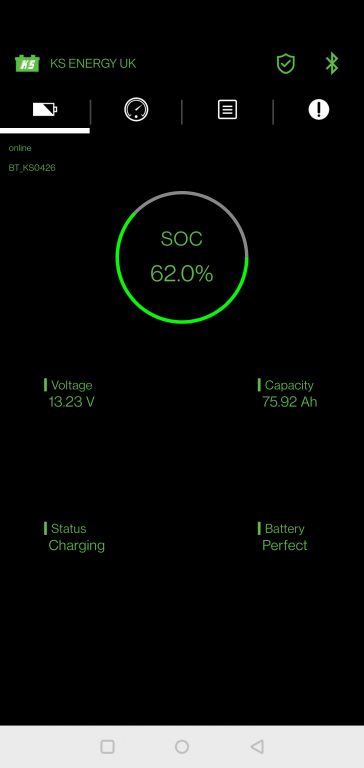
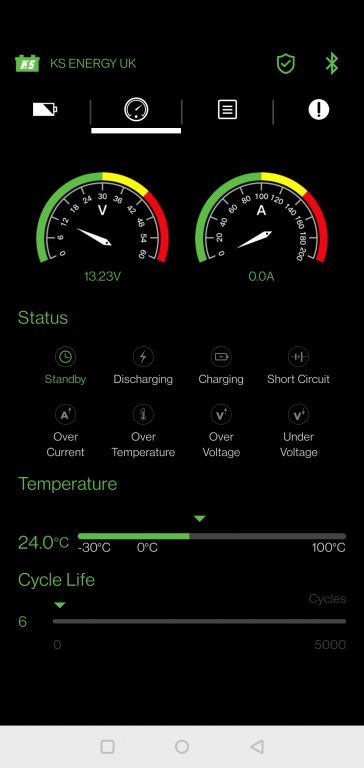
And similar for the Victron controller.
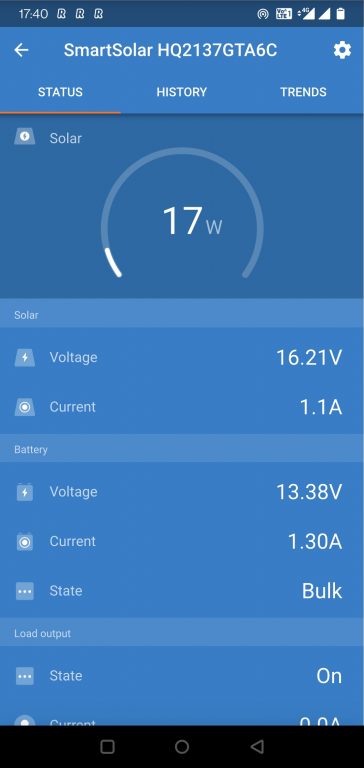
A day or so after the install and all the monitors are indicating as they should. This is a brave new world – it’s like moving from analogue to digital or paper based to computer. No more guessing how much energy is left in the batteries. No more wondering if I’ve discharged the lead acid battery too much. No more guessing as to how much charge is entering the battery.
Finally, big savings now we can stay at off-grid sites and one final added bonus, an extra 15kg of payload!